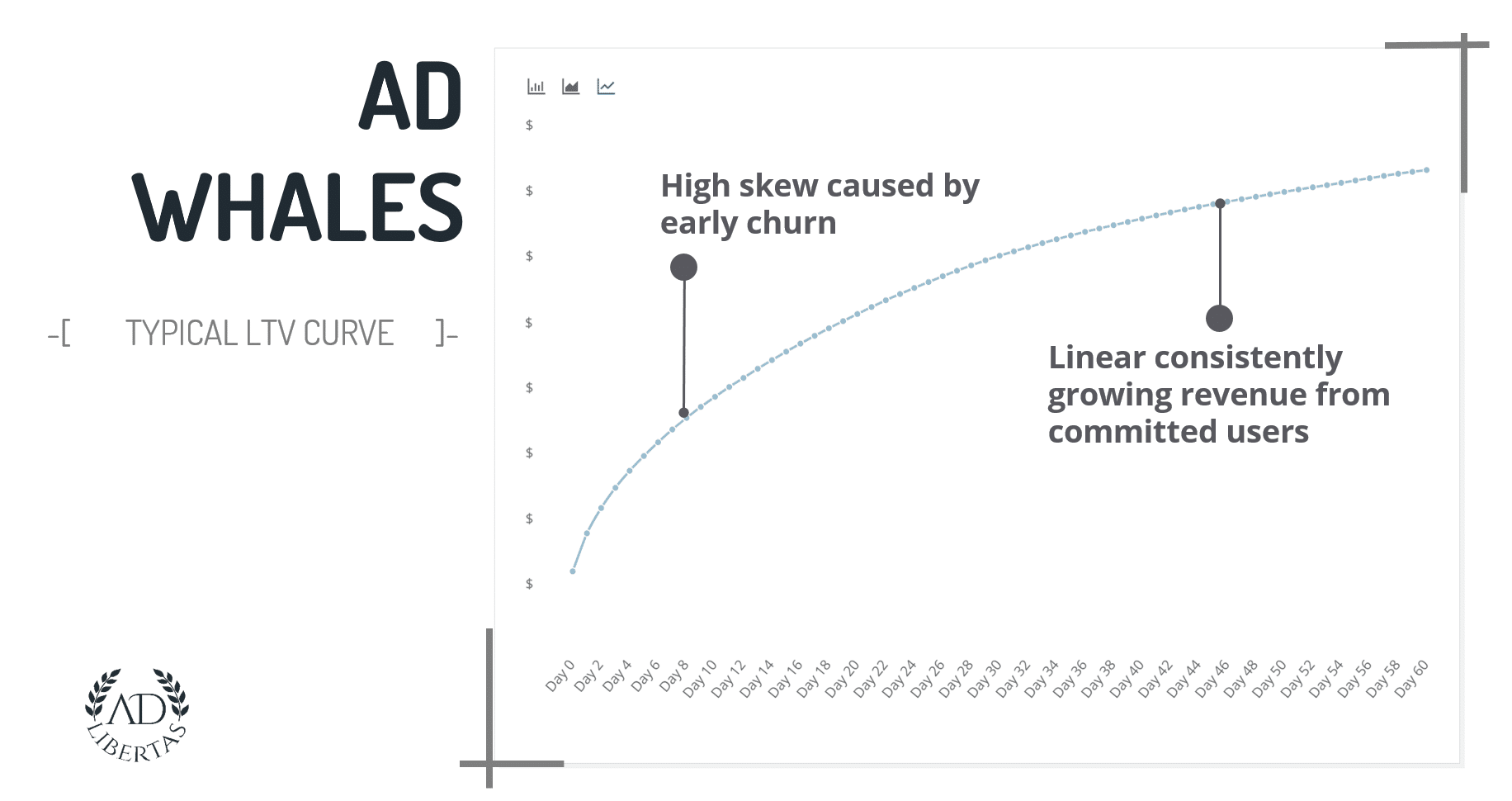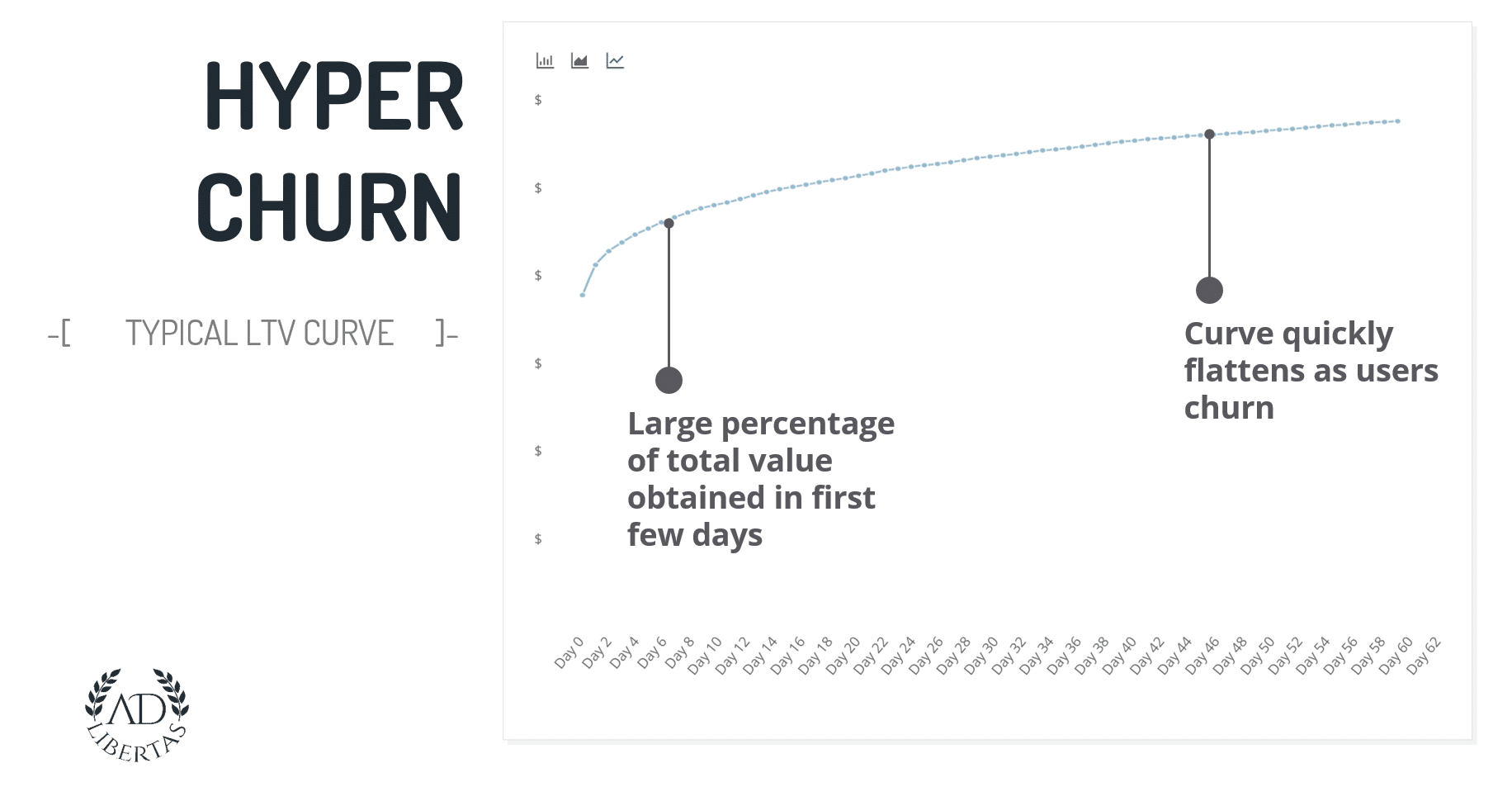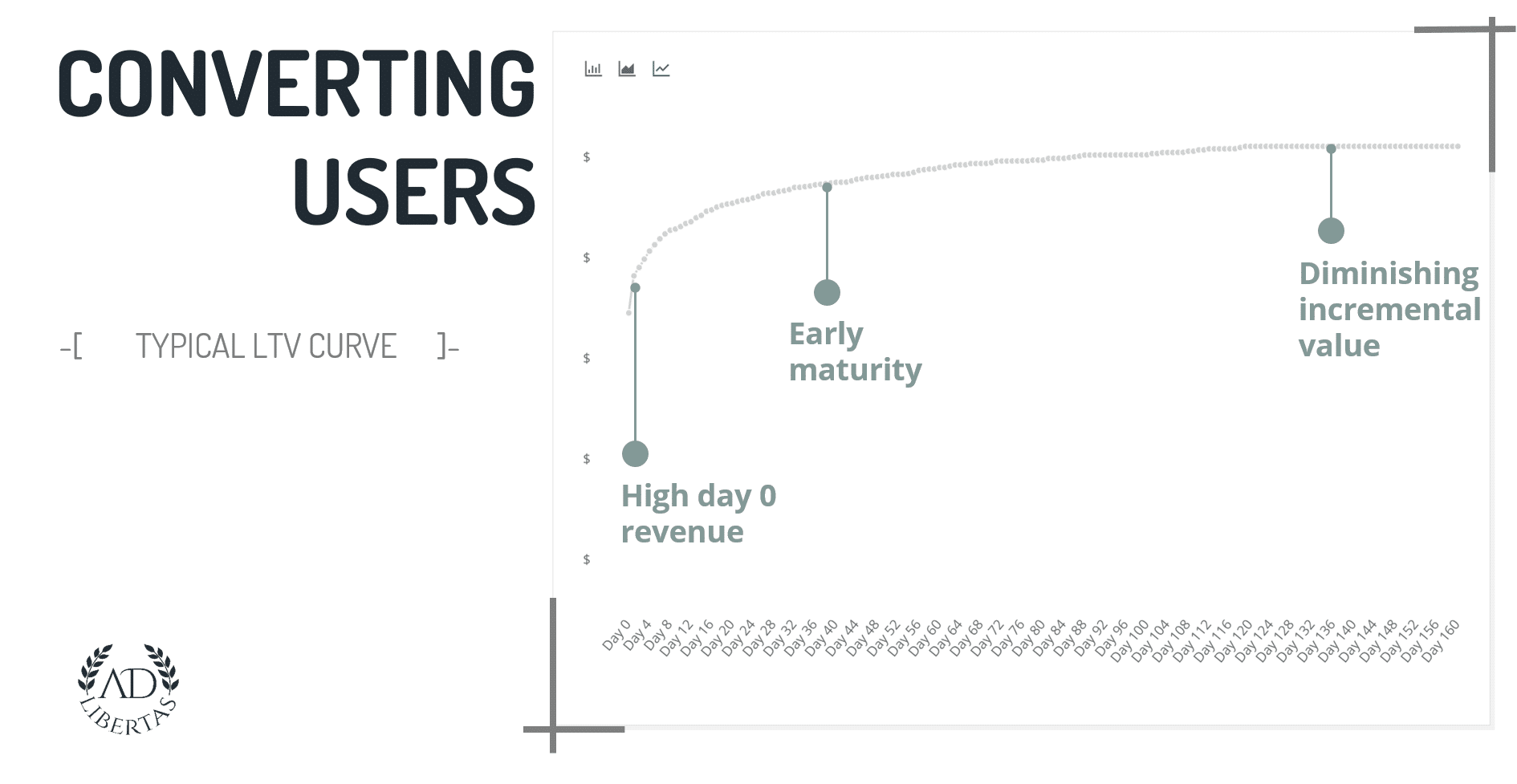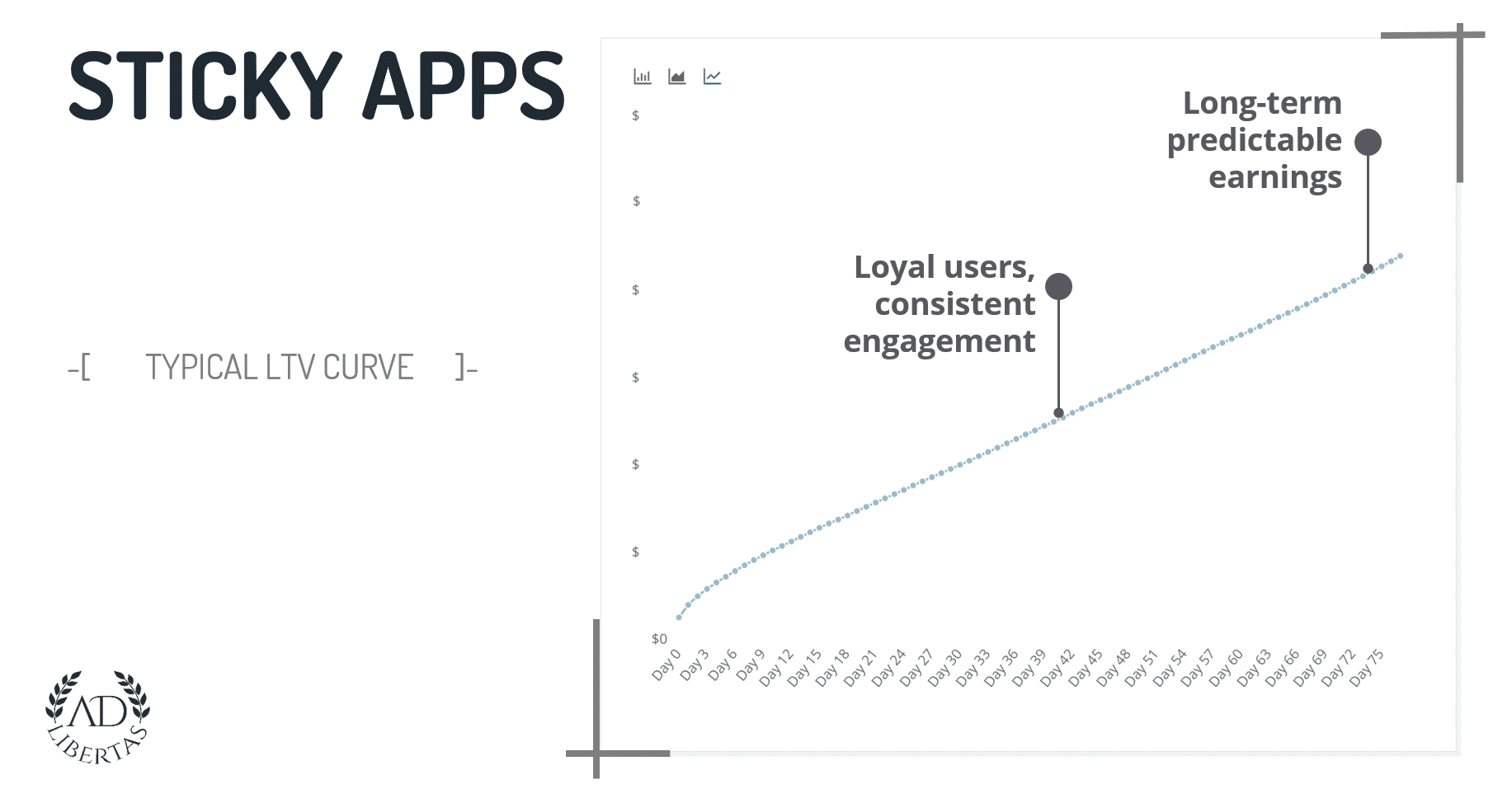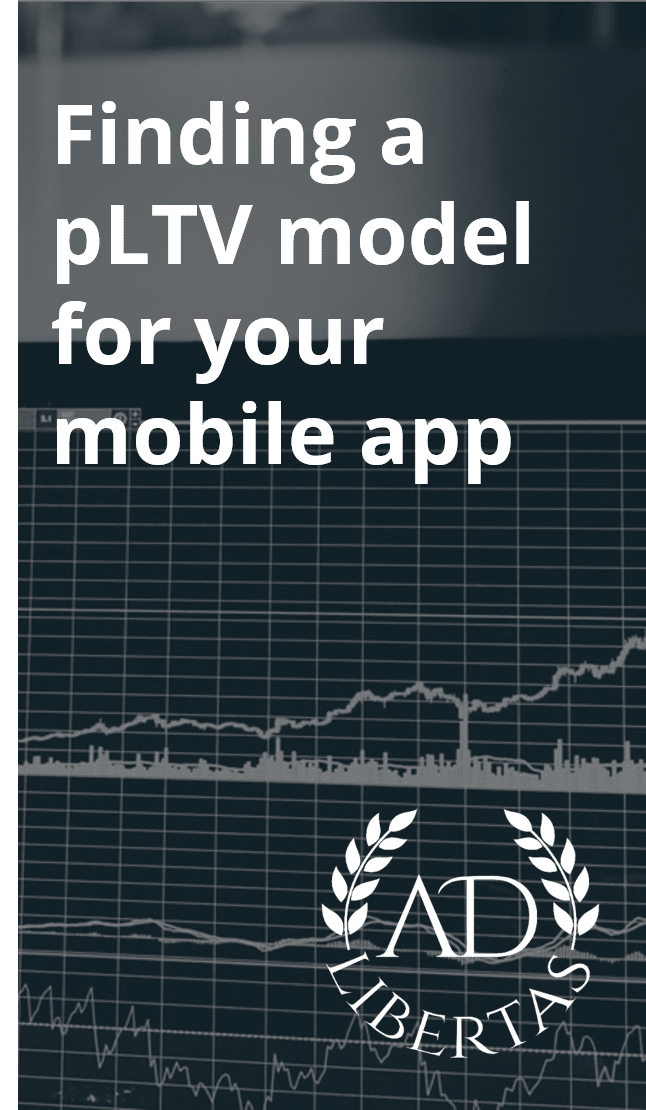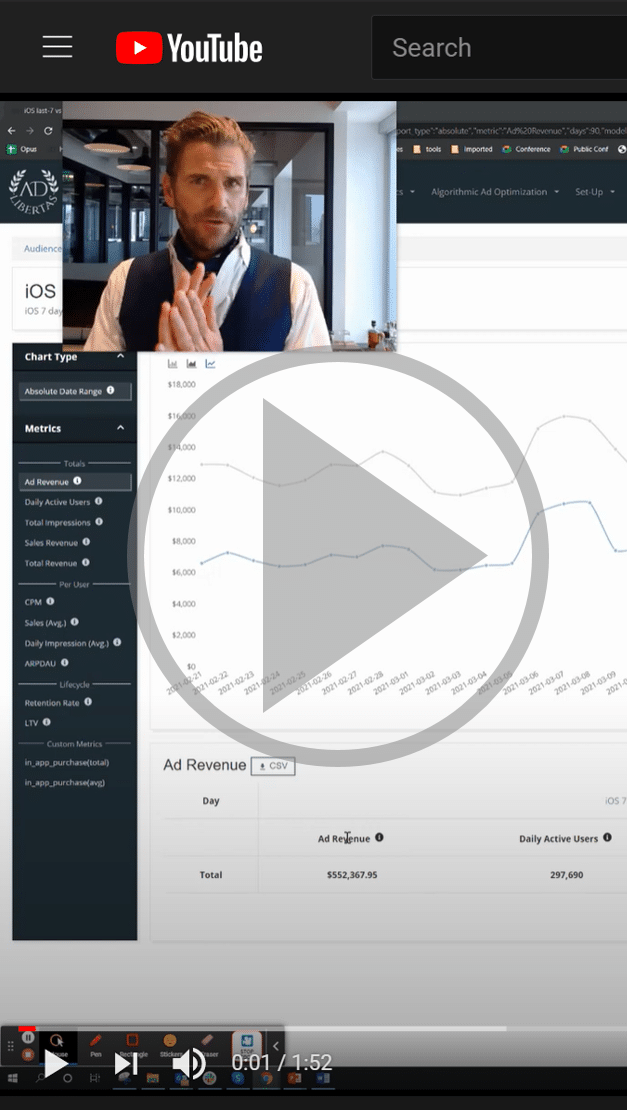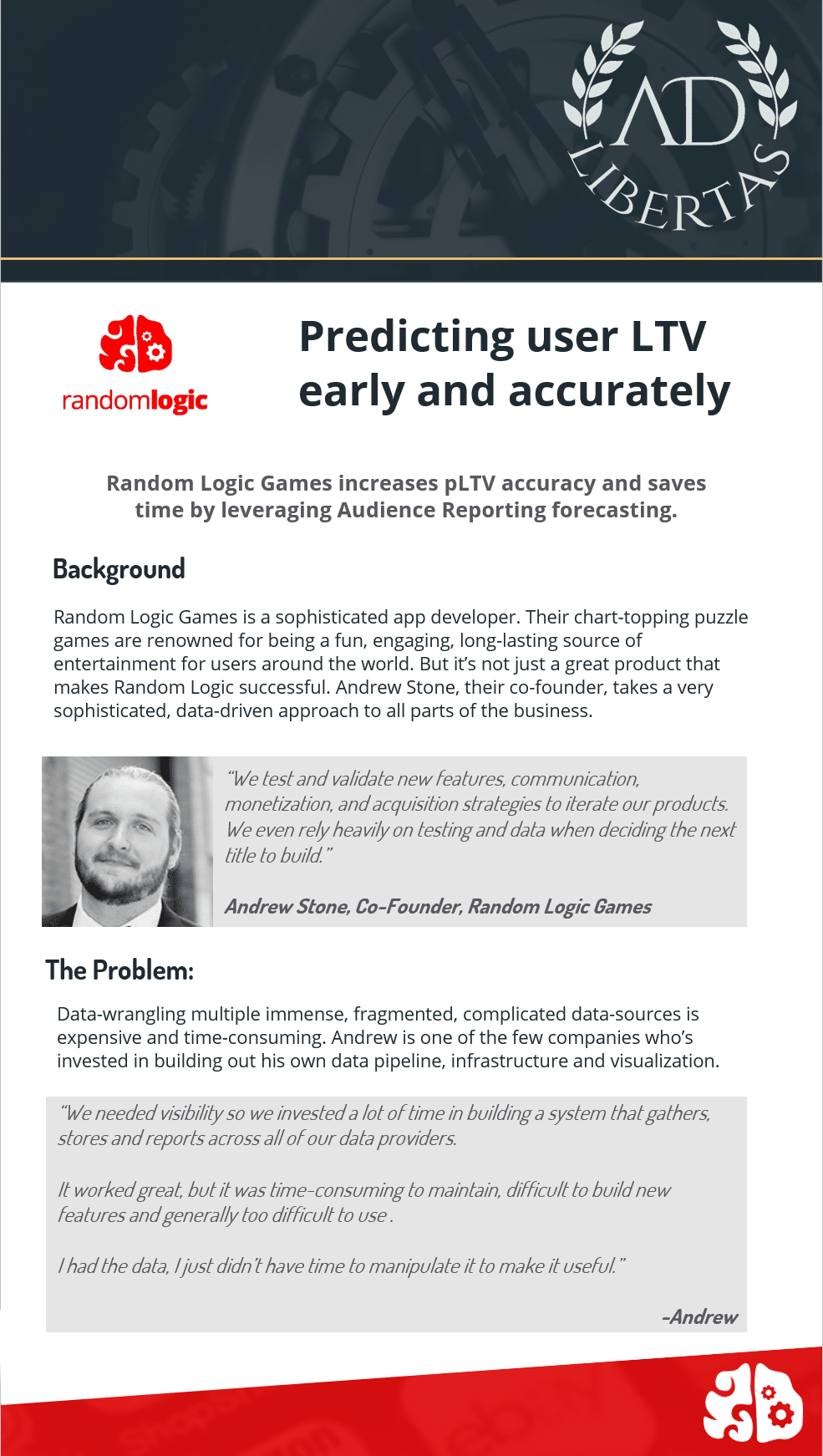The two event-types you’ll need to accurately predict growth and retention

Photo by Rasheed Kemy on Unsplash
Background:
As we’ve covered in earlier articles app growth is fundamentally achieved by (1) getting more users in your app, and/or (2) getting more out of the users in your app. App developers constantly make changes to their app or campaigns to achieve one or both of these goals. The key to positive change is being able to measure the impact of your change and continue iteration.
Ultimately the lifetime user value (LTV) is the golden metric in achieving measurement of a customer’s value. But the rub is, waiting the entire lifetime to measure the customer’s value is impractical — so you must extrapolate, estimate and predict user value to quickly make assessments of change impact.
But how do you predict the lifetime value of a user – ideally as early as possible? The answer is by measuring a user’s interaction with the app you can use their behavior to accurately predict their long-term value. A user’s interaction is measured through in-app events, placed by the app developer. This article is designed to help you choose what types of events to include in your app to measure and predict user behavior helping you facilitate growth for your apps
Two Types of Events:
When choosing events it important to have the end-goal in mind – in most cases this will be pLTV (predicted Lifetime Value) of a user. LTV is generated through a combination of earned-revenue, user-retention and engagement. As such, events you choose for the purposes of prediction will be tied to the actual, eventual or inferred outcome related to these events.
We’ve broken down events into two categories: short-term indicators and long term engagement:
Short-term indicators are events early in a user’s app lifetime – where lifetime starts at the moment of install. These are events that a user triggers (or misses triggering) that give indications to their likely long-term intentions in the app. While these events aren’t perfectly accurate they should be directionally correct to help you identify user value early. In most cases these events are used in marketing efforts to judge the value of a campaign or acquisition source.
Long term engagement are events or KPIs that show a user’s ongoing interaction with the application and track their ongoing usage. These events – when aggregated over time – can present a much more accurate predicted LTV for the customer, as well as give accurate long-term app usage behavioral indications. These events are often used by product teams looking to track user-engagement behavior and make iterative changes driving engagement or LTV.
The events you need will depend on your app
Choosing the actual events will depend on the app you have. Where is the bulk of your revenue earned? How long do your users stick around? How high is your churn & retention?
One universal constant we’ve seen is every app is different – which is why we give so many options on selecting your projected LTV curve – so for simplicity we’ve broken up app-types into categories to help you choose the right events.
The categories are broken down by their typical user-engagement and revenue contribution, meaning the LTV-curve, because where in the user’s journey they are contributing revenue will dictate when and where you want to measure. Keep in mind your app may have multiple types of users that make up the total.
Ad-whales:
def: apps that rely heavily on a minority of users, who become loyal users supplying long-term, reoccurring ad revenue.
Types of apps: puzzles, audio apps, occasional-use utility apps.
Early Indicators:
Here you want to find early indicators of ad-whales– that is users who will make it beyond the first couple of days and are highly likely to stick around for long periods of time – often these whales produce 10X the value of a standard user. The proper early indicators are signs that the user is showing a high propensity for engagement – they love the app early.
Examples:
| – High-engagement: Games Played on day 1, |
| – Social: Sharing content |
| – Making a commitment: Inviting collaborators or creating a login |
Long-term engagement indicators
These are usually metrics of engaged users by some type of in-app action. Most often these are an event divided by active users to monitor specific user behavior. These are “health” metrics you can use to compare user engagement across version releases, feature changes, AB tests, and other long-term product usage metrics.
Examples:
| – Ongoing engagement: Games played / DAU, |
| – Re-engagement: daily visits / DAU |
Hyper-Churners:
def: Apps with high user churn, and the purpose is getting LTV as high as possible within 7 days, as most users leave thereafter
Types of apps: hyper-casual games, viral chart-climbers
Early Indicators:
Because the most common business model for this type of app is to earn money from users before they churn in a couple of days, app monetization is essentially trading users to advertisers. Thus the type of user is more important than many of their actions.
Examples:
| – High-value users: Newer devices, expensive devices, English-speaking geo. |
| – Likely desirable users: The very latest (or early release) OS version, opting into ATT (allowing to be tracked), language setting |
Long-term Indicators
The “long-term” measurement for apps with high churn rates might only be 7 days and since the hyper-churn model has a short lifetime measurements here can be closely tied to revenue (or profitability of purchased users). Therefore the long-term indicators are most often the aggregation of all revenue earned from a user.
Examples:
| – Total aggregated ad-revenue & IAP events |
Converting Users:
def: Apps that focus heavily on the “conversion of users” are generally apps that rely on subscriptions or IAP from a subset of users for the bulk of the revenue, therefore their goals are to encourage a growing number of users towards the eventual conversion.
App Types: dating apps, photo & video, lifestyle, streaming apps
Early indicators:
Early indicators are all about identifying the user path that’s likely to end up at a purchase. Depending on the app this could be a mix of interest and investment.
Examples:
| – High-Interest: reading the pricing page |
| – Investment: creating an account, signing up for a free trial |
| – Action: in cases where users don’t have a free trial we see the highest subscription and IAPs actually happen on the day of install |
Long term:
In most cases, long-term indicators are about measuring the propensity for (re)opting into a renewal or another purchase. These indicators are measurements of user engagement as they are using the app. Less engaged are less likely to (re) convert.
Examples:
| – Ongoing engagement: app usage as compared to average |
| – Re-engagement: daily/weekly visits as compared to averages |
| – Sudden changes: If a historically active user drops activity, this will be an indication of churn. |
Sticky apps:
def: Also known as cult apps these types of apps command truly impressive long-term retention of users. In most cases these are apps that have constantly changing content that inspires uses to constantly revisit, often LTVs are measured in multi-years. These users, once engaged, are fiercely loyal and follow close to a straight line for LTV.
App Types: social media readers, user-generated entertainment, news, weather apps, cult-classics
Early indicators:
Like apps that focus on ad whales, early on you’re looking for signs of a highly engaged user. Signs this user is committed for the long-haul:
Examples:
| – Investment: Creating an account, linking to Facebook, setting a user-profile/screen-name |
| – Interest / Usage: a much higher-than-average day-1 usage |
Long-term indicators:
Measuring users’ ongoing usage is the key here, like a subscribed user you’re looking to measure engagement or interactions over time to find users losing interest.
Examples:
| – Engagement: screens/articles per DAU |
| – Habitual: sign-ins per day/week |
Conclusion:
Your experience with your first events won’t be perfect immediately. The events and your measurements – like your app – will constantly be refined and iterated to better measure and track results.
For more reading, see a related article on using your in-app events to predict user value and behavior or on the iterative process of growing your app.
If you’d like to speak about your app in particular and hear our thoughts on what we’ve seen in the market and the advice we have, feel free to get in touch with us!
